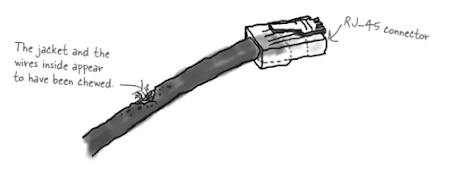Identifying Interface and Cable Issues in Network Engineering
In network engineering, it is important to identify and troubleshoot any issues with interfaces and cables in order to ensure smooth communication and data transmission. Various interface and cable issues can arise, including collisions, errors, duplex mismatch, and speed issues. In this blog post, we will explore these issues in detail and provide tips on how to troubleshoot them.
Collisions:
Collisions occur when two devices on the same network attempt to transmit data at the same time. This results in a collision of data packets, causing the devices to stop transmission and wait for a specified amount of time before attempting to retransmit the data. Collisions are commonly seen in networks that use the Carrier Sense Multiple Access with Collision Detection (CSMA/CD) protocol, such as Ethernet networks.
To check for collisions on a Cisco device, you can use the following show command:
show interfaces [interface_name]
Troubleshooting Collisions:
To troubleshoot collisions, check the network for any devices that may send high data volumes. Additionally, consider using a network analyzer to monitor network traffic and identify devices that are sending large amounts of data. If the issue persists, try reducing the network load by implementing traffic shaping or limiting the amount of data transmitted by certain devices.
Errors:
Errors refer to any incorrect data that is transmitted over the network. This can be caused by a variety of issues, including hardware malfunctions, software bugs, and network congestion. Errors can result in slow network performance, disconnections, and data loss.
Troubleshooting Errors:
To troubleshoot errors, check the network for any devices that may be experiencing hardware issues. Additionally, use network diagnostic tools to monitor network traffic and identify any sources of errors. If the issue persists, consider upgrading the software or hardware of the affected devices.
To check for errors on a Cisco device, you can use the following show commands:
show interfaces [interface_name]
show interfaces [interface_name] counters
Duplex Mismatch:
A duplex mismatch occurs when two devices on the network have different duplex settings, meaning they have different transmission and receiving speeds. This can result in slow network performance and data loss.
Troubleshooting Duplex Mismatch:
To troubleshoot duplex mismatches, ensure that all devices on the network have the same duplex settings. This can typically be done through the device's network settings or by using network diagnostic tools. If the issue persists, consider upgrading the network hardware or reconfiguring the network topology to improve network performance.
To check for duplex mismatches on a Cisco device, you can use the following show command:
show interfaces [interface_name] status
Speed Issues:
Speed issues occur when the speed of data transmission between two devices is slower than expected. This can be caused by a variety of issues, including network congestion, hardware limitations, and outdated network hardware.
Troubleshooting Speed:
To troubleshoot speed issues, check the network for any devices that may be experiencing hardware limitations or outdated network hardware. Additionally, use network diagnostic tools to monitor network traffic and identify any sources of congestion. If the issue persists, consider upgrading the network hardware or reconfiguring the network topology to improve network performance.
To check for speed issues on a Cisco device, you can use the following show command:
show interfaces [interface_name] speed
In conclusion, understanding and identifying interface and cable issues is crucial in network engineering. By troubleshooting these issues, you can ensure smooth communication and data transmission and optimize network performance.















0 comments:
Post a Comment